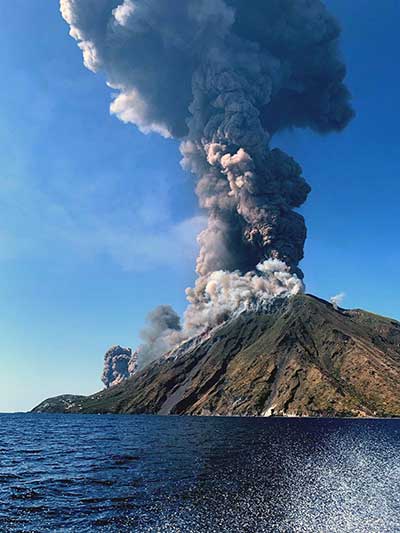Date: 21/02/2023
Relevance: GS-3: Science and Technology- developments and their applications and effects in everyday life.
Key Phrases: Cooling Earth, Moon Dust, Climate Solution, Geoengineering, Governance, Global South, Global North, Aerosol, Solar Radiation Management, Volcanic Eruption.
Context:
- The discharge of sulphates and other aerosols into the
stratosphere through a potent volcanic eruption can result in a cooling
effect in the atmosphere.
- This phenomenon has inspired attempts by humans to artificially spray aerosols into the stratosphere in order to mitigate global warming.
Key Highlights:
- Recently a study, conducted by researchers from the United States,
suggests that billions of tons of moon dust could be catapulted to a
Lagrange point in space, where the gravitational fields of the Earth and
the Sun neutralize each other.
- While the endeavor faces significant technical and financial hurdles, it has garnered interest nonetheless.
- Last year, a private enterprise named Make Sunsets sparked a dispute by utilizing balloons to introduce minute quantities of sulphur dioxide into the stratosphere in an attempt to promote 'solar-dimming' as a means of counterbalancing carbon emissions.
- To many researchers the event was a major red flag signaling the colonization of common goods like the atmosphere by private players.
Understanding The Impacts:
- The scientific understanding of the impacts of volcanic eruptions is widely recognized. Aerosols, particularly those that scatter radiation like sulphates, in the stratosphere can result in a cooling effect, as evidenced by the year without summer.
- The cooler summer led to droughts on a global scale, causing crop
yields to plummet and resulting in illness and starvation.
- Numerous climate models have verified that reducing the amount of incoming sunlight via stratospheric aerosols would have comparable outcomes.
- Certain recent studies have claimed that the resulting drought
from solar radiation management (SRM) won't be as detrimental, and
that the gross domestic products (GDPs) of most countries will experience a
positive impact.
- However, it is crucial to note that even advanced climate models can only make predictions regarding the temperature response to changes in solar radiation brought on by greenhouse gas and stratospheric aerosol.
- In addition, these temperature projections are best at the continental scale not at the regional scale, which matters when it comes to heatwaves, drought etc.
- Any projections related to changes in rainfall, as a result of
throwing up dust into the atmosphere or in space to block sunlight, will be
highly uncertain.
- Relying on models that cannot accurately predict precipitation, it would be reckless to conclude that SRM will not result in unintended consequences such as drought and crop losses or that it will have positive impacts on national GDPs.
Geoengineering Governance:
- The fortunes of the Global South must be considered, which may once again be an innocent bystander to large-scale experiments conducted by the Global North – just as the Global North proceeded to industrialize and cause global warming, the effects of which will be felt most heavily by the Global South.
- Other climate mitigation strategies, such as the use of renewable
energy, emissions reductions schemes, carbon-capture technologies, and
bioenergy, are not expected to have any dangerous unintended consequences.
- On the other hand, spraying aerosols even in a small pocket of the stratosphere will have global consequences that we can’t fully quantify at present.
- Numerous natural and social scientists have raised serious apprehensions
regarding the scientific and governance concerns of SRM.
- Questions such as who will determine the time, location, and amount of aerosol deployment, who will oversee the monitoring for unintended repercussions, and which country will be responsible for any potential liability if an experiment carried out in one region affects rainfall in another, remain unanswered.
Conclusion:
- The University of Oxford and the Asilomar Conference have proposed
certain guiding principles for geoengineering efforts aimed at altering
the climate.
- These include explicit reporting of the science and technology involved, as well as the potential consequences - positive, negative, and neutral.
- The governance of deployment, monitoring, verification, and reporting should be democratic and inclusive, and stakeholders must agree to compensation mechanisms for any harm beforehand.
- It's important to note that the aerosol-loading approach has a
significant drawback in the form of a rebound effect once the spraying
stops and the aerosols are washed out of the atmosphere.
- This means that even during the temporary cooling period, we must continue to reduce emissions. If we don't, the cooling effect will end, and a period of warming will follow.
- If the cooling effect is seen as an opportunity to continue with business as usual, we risk creating a Frankenstein's monster.
Source: The Hindu
Mains Question:
Q. What is solar radiation management, and how can it help to limit global warming? Also mention its limitations. Comment (250 words).






















